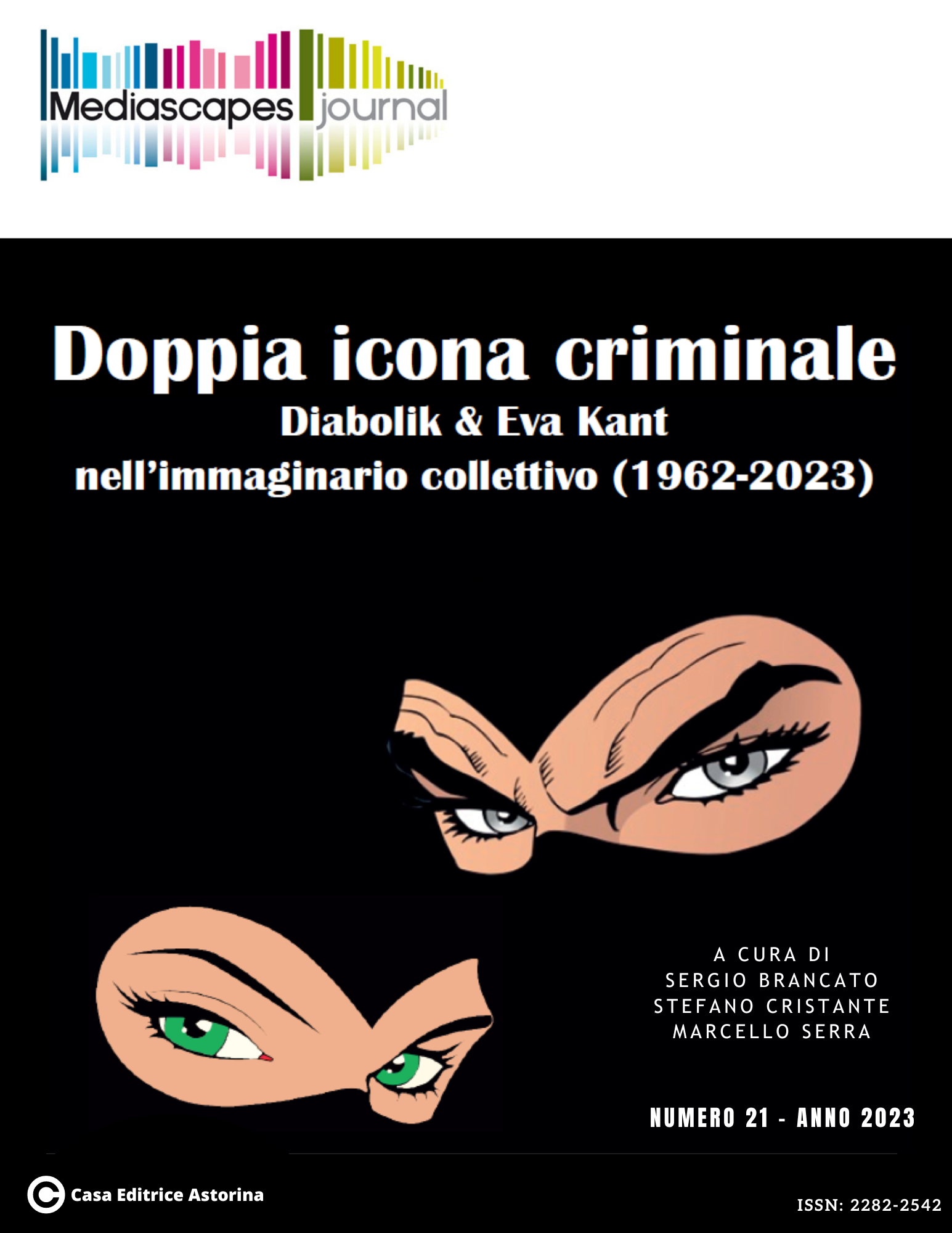La trasposizione videoludica del fumetto di Diabolik ed Eva Kant fra tradizione e innovazione narrativa
Parole chiave:
videogames, fumetti, transmedia storytelling, narratologiaAbstract
Facilitated by digital technologies (Jenkins, 2014), the video game industry has seen an increasing expansion and convergence between different media. This process has allowed for the adaptation of comics such as Diabolik and Eva Kant into video games, films and television series. The serial form of Diabolik, in its Simulmondo series (1992-1993) in particular, offers an opportunity to study narrative dynamics in the transition between media. The theories of translation and transposition by Lefevere (1992) and of video game narratology by Juul (2005) are useful in this context. The Diabolik games rival Triple-A titles in terms of “scenario” structure and antihero philosophy (Bostic, 2006; Spicer, 2011), sometimes surpassing them in addressing political and social issues (Brancato, 2009). Our analysis will focus on the relationship between the comics and the videogame, exploring the challenges and opportunities of transposition, thus shedding light on the adaptation of an icon such as Diabolik in the videogame context.
##submission.downloads##
Pubblicato
Come citare
Fascicolo
Sezione
Licenza

TQuesto lavoro è fornito con la licenza Creative Commons Attribuzione 4.0 Internazionale.
Gli autori che pubblicano su questa rivista accettano le seguenti condizioni:
- Gli autori mantengono i diritti sulla loro opera e cedono alla rivista il diritto di prima pubblicazione dell'opera, contemporaneamente licenziata sotto una Licenza Creative Commons - Attribuzione che permette ad altri di condividere l'opera indicando la paternità intellettuale e la prima pubblicazione su questa rivista.
- Gli autori possono aderire ad altri accordi di licenza non esclusiva per la distribuzione della versione dell'opera pubblicata (es. depositarla in un archivio istituzionale o pubblicarla in una monografia), a patto di indicare che la prima pubblicazione è avvenuta su questa rivista.
- Gli autori possono diffondere la loro opera online (es. in repository istituzionali o nel loro sito web) prima e durante il processo di submission, poiché può portare a scambi produttivi e aumentare le citazioni dell'opera pubblicata (Vedi The Effect of Open Access).


